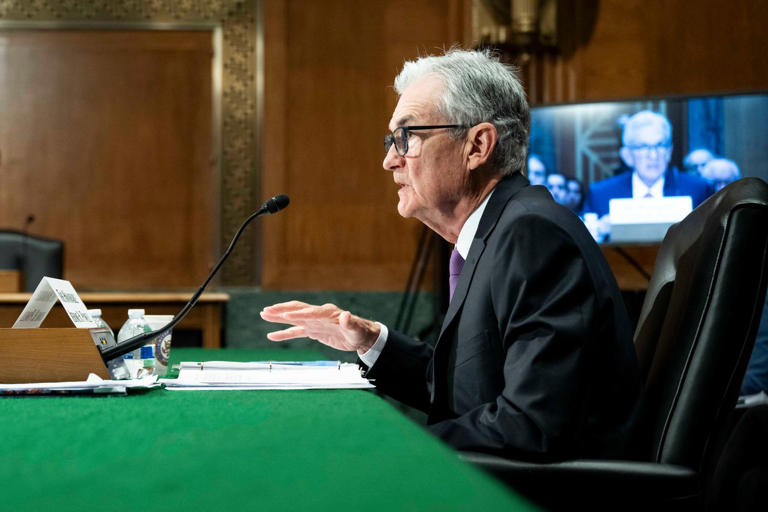The Federal Reserve is maintaining its stance to lower interest rates later in the year, a move eagerly awaited by many households and small businesses in the United States. However, for large corporations with access to the corporate bond market and investors benefiting from a buoyant stock market, the urgency for Fed intervention appears less pressing. Despite leaving its federal-funds rate target unchanged at a range of 5.25% to 5.5%, the highest level seen in over two decades, the Fed has affirmed its intention to implement rate cuts in the upcoming months. Fed Chair Jerome Powell reiterated the characterization of current rates as “restrictive” and suggested a probable need to ease policy restraint sometime this year.
While adjustments in the Fed’s benchmark fed-funds rate strongly influence short-term rates like those on bank deposits and money-market funds, their impact on longer-term rates such as corporate bonds can be less straightforward. The notion that the Fed’s target rate is deemed restrictive is underpinned by various models, including iterations of the Taylor rule proposed by Stanford economist John Taylor. These models determine appropriate rate levels based on factors such as the Fed’s inflation target, prevailing inflation rates, economic slack estimations, and anticipated future rate levels. According to three versions of the Taylor rule computed by the Atlanta Fed, the target rate should ideally fall within the range of 3.9% to 4.7%.
For many Americans, the restrictive nature of interest rates may be evident simply by examining the interest rates on their credit card accounts. Data from the Fed reveals that the average interest rate on commercial bank credit-card plans reached 21.5% in the fourth quarter, marking the highest level in the available 30 years of data. This starkly contrasts with the 14.9% rate recorded in the fourth quarter of 2019, just prior to the onset of the pandemic.
Recent research conducted by former U.S. Treasury Secretary Larry Summers and his co-authors suggests that the persistently high borrowing costs faced by households might offer insight into a puzzling phenomenon: Despite a robust job market and easing inflation, consumer sentiment remains subdued.
Small businesses, a crucial component of the economy, often rely on credit cards for financing, with a recent Federal Reserve survey indicating that 56% of them regularly utilize cards as a source of credit, more than any other credit source. Moreover, lines of credit, another common financing option for small businesses, are linked to short-term interest rates. Constraints on small businesses can hamper job growth, as companies with fewer than 100 employees contribute significantly to private employment, and research indicates that young, small businesses play a pivotal role in driving U.S. job creation.
However, while the Federal Reserve targets overnight rates, long-term interest rates have not risen proportionally since the pandemic began. The yield on the 10-year Treasury note, currently around 4.3%, is higher than pre-pandemic levels but historically moderate, notably lower than the 5% seen last fall.
The relatively subdued long-term rates may reflect investors’ expectations of future rate cuts by the Fed and confidence in the central bank’s commitment to controlling inflation, as suggested by Duke University economist Anna Cieslak’s analysis of Fed meeting transcripts. Investors appear to believe that the Fed can rein in inflation without triggering a recession, as evidenced by low corporate bond yields and a surging stock market. The spread between Treasury and corporate bond yields is narrow, while the S&P 500 has reached new highs, up over 30% from a year ago.
However, mortgage rates, which significantly impact households, remain elevated compared to pre-pandemic levels, deterring many renters from homeownership. Consequently, large companies with access to public markets enjoy more favorable funding conditions than many small businesses and households, while the growing wealth in the stock market provides an additional economic boost.
Various measures, including those compiled by Goldman Sachs and the Chicago Fed, suggest that overall U.S. financial conditions have become less restrictive. The Fed’s own index, based on measures such as overnight rates, bond yields, and home and stock prices, indicates that conditions in January were the least restrictive since August 2022.
Ultimately, policymakers can directly influence short-term rates, which they perceive as sufficiently restrictive. While they may consider rate cuts to ease off on policy restraint, they aim to avoid overly stimulating the stock market, according to Johns Hopkins economist Jonathan Wright.
